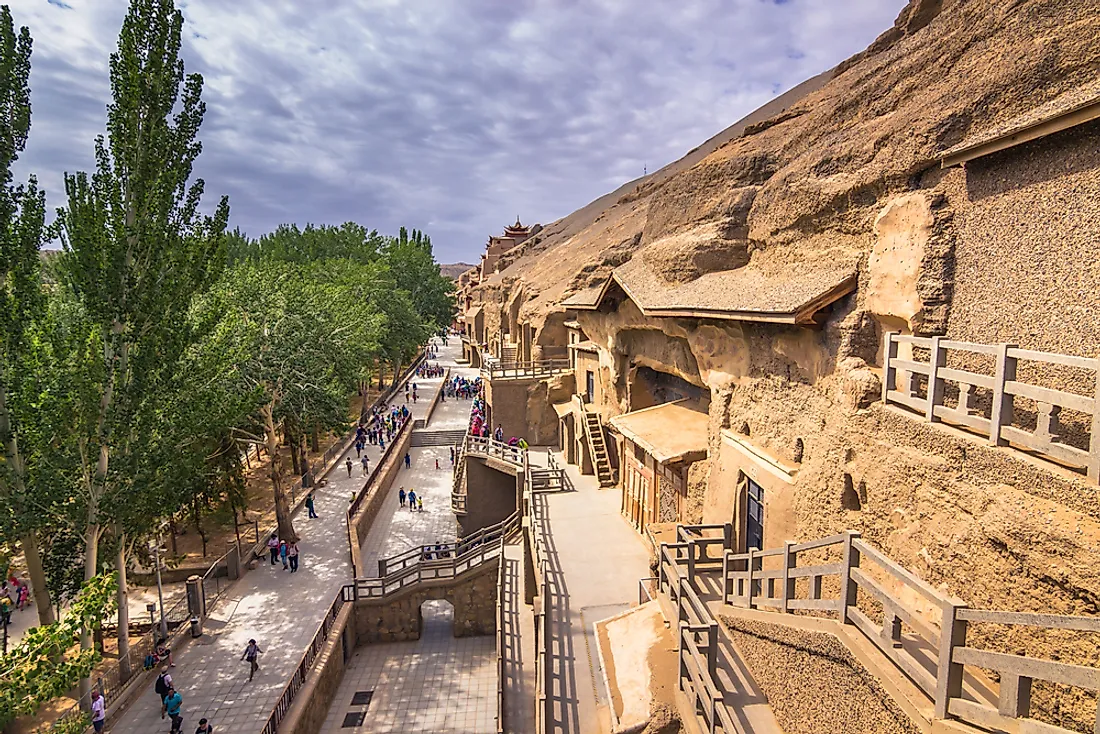Mogao Caves - UNESCO World Heritage Sites in China

The Mogao Caves is a system of caves built between the 4th and 12th centuries in Ancient China. Numbering up to thousands, these caves were designated as a World Heritage Site by UNESCO in 1987 due to their cultural significance. The caves are an important historical site of Buddhism as they offer a glimpse into the beliefs and traditions practiced by ancient Buddhists.
Description
The Mogao Caves are situated near the town of Dunhuang, along China’s ancient Silk Road in Gansu Province. The earliest of the Mogao Caves date back to the Northern Liang era of the 4th century CE, while the most recent being dated back to the 12th century during the Yuan dynasty. The Library Cave is arguably the most popular of all the Mogao Caves as it was where archeologists discovered thousands of ancient manuscripts in the early 20th century.
Discovery
In the late 19th century, there was great interest in China’s ancient Silk Road from scholars and historians. Historians traveling along the Silk Road who passed through the lost town of Dunhuang discovered ancient artifacts and murals. However, it was Chinese historian, Wang Yuanlu who discovered the Mogao Caves, many of which had been sealed shut with sand. Wang’s most important discovery was in June 1900 when he discovered a cave that housed thousands of ancient documents. The discovery of the documents excited archeologists around the world and some traveled from as far as Britain and France to undertake archeological expeditions in Dunhuang. In 1910, the Chinese government retrieved many of these ancient documents, which were then stored in Peking (modern-day Beijing).
History
The earliest caves in the system were built in the 4th century. However, Dunhuang was already an important trading center on the Silk Road, after it was established by Emperor Wudi of the Han Dynasty as a garrison in the 2nd century BCE. Legend has it that a Buddhist monk, Le Zun had a vision that inspired him to build the first of the Mogao Caves. Other Buddhist monks followed suit, building more caves penetrating the cliff. While the monks did the construction and painting of the caves, the funding of these operations was made by influential people in Chinese society, including the royal family. The number of Mogao Caves had reached 1,000 by the Tang Dynasty. By then, the site had become a key spiritual center, attracting crowds of people who made pilgrimages to the caves. In the 9th century, the Mogao Caves was under Tibet and acted as a haven for Buddhists during the religious persecution ordered by Emperor Wuzong.
Decline
Activity in and around the caves gradually declined during the late Tang dynasty and had stopped after the Yuan dynasty. There are several reasons attributed to the decline of the Mogao Caves as the cultural hubs of ancient China. The caves’ decline was linked to the decline of trade along the Silk Road, as the kingdom started exploring marine routes as the next frontier in international trade. Additionally, Islamic sultanates had conquered most of western Asia and posed a threat to the caves, some of which were sealed to protect precious manuscripts and other vital paraphernalia.











